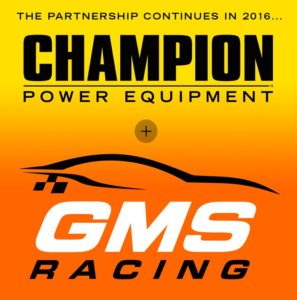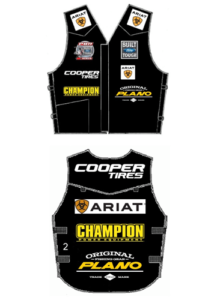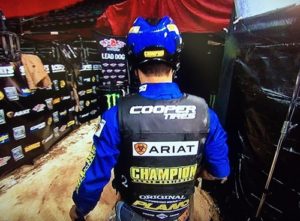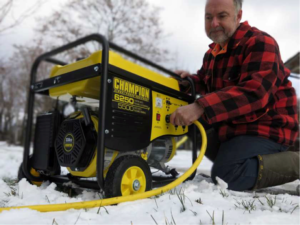Champion Power Equipment Continues Partnership With GMS Racing

Market leader in power generation equipment to be primary sponsor for Grant Enfinger in select races during the 2016 season.
Statesville N.C. (February 5, 2016) – Champion Power Equipment (Champion) will expand their partnership with GMS Racing in 2016, as the primary sponsor of driver Grant Enfinger for select NASCAR Camping World Truck Series (NCWTS) events. Champion, a leading supplier of durable engine products, will kick off the season with Enfinger at the historic Daytona (Fla.) International Speedway later this month.
“Having Champion renew their partnership for 2016 is a testament towards Grant (Enfinger) and GMS Racing as a whole,” said Nic Moncher, Team Manager for GMS Racing. “We appreciate the support Champion has given us over the past two years, and look forward to continuing our growth together. I look forward to seeing Enfinger kick off the season in his No. 33 Champion Power Equipment Chevrolet at Daytona.”
Champion has been a longstanding partner with the Statesville, N.C.-based team since the beginning of 2014. The 2015 season marked Champion’s first primary sponsorship in the motorsports realm, seeing their notable yellow design adorn Enfinger’s car while competing in the ARCA Racing Series presented by Menards season finale at Kansas Speedway.
“Champion is tremendously excited to be partnering with GMS Racing and driver Grant Enfinger,” said Dennis Trine, Champion Chief Executive Officer. “We believe Grant is a strong fit for our organization and will continue to represent the logo well in the NASCAR Camping World Truck Series. It’s fitting that Champion was behind Grant as he became a champion, and now we stand behind him as he takes the next step in his career.”
Champion is a market leader in power generation equipment for work, recreation or home use. Champion has years of experience providing dependable and durable power products designed and engineered in the United States for the North American and world markets.
“I am excited to have Champion Power Equipment on board the No. 33 Chevrolet,” said 31-year-old Grant Enfinger. ”Champion has been a great partner to work with over the past two years. Without their durable products each week we would be at a loss at the track and at the shop. I am hoping to bring Champion a new level of success in the (NCWTS) Truck Series.”
The No. 33 Champion Power Equipment Chevrolet Silverado will take to the track at Daytona International Speedway for the first time this season with live coverage on Fox Sports 1 and MRN Radio Friday, February 19 at 7:30 PM EST.
About Champion Power Equipment : Since 2003 Champion Power Equipment has earned a reputation for designing and producing the market’s finest power equipment. From our original headquarters in Santa Fe Springs, California Champion has expanded its North American footprint to include facilities in Jackson Tennessee, Milwaukee Wisconsin and Toronto Canada. Today Champion’s product line has expanded to include portable generators, home standby generators, inverter generators, engines, winches and log splitters. With over 2.5 million generators sold in North America, Champion is a market leader in the power equipment field.
ABOUT GMS RACING, LLC: GMS Racing LLC, competes full-time in the NASCAR Camping World Truck Series with drivers Spencer Gallagher, Johnny Sauter and Grant Enfinger, and part-time in the NASCAR XFINITY Series. Formerly based out of Las Vegas, Nevada, home of Allegiant Travel, GMS Racing is now housed in a state of the art 51,000-square-foot shop in Statesville, North Carolina.




